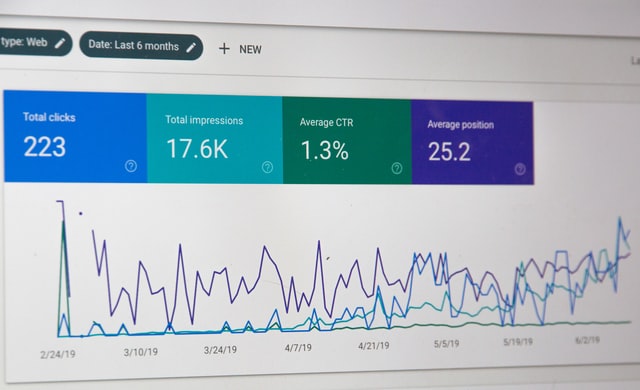Despite Google’s assertions that broad match is more successful than ever, many marketers are still mourning the loss of their preferred modified broad match type. How can you ensure that your adverts continue to attract relevant traffic?
Consider the following: Keywords with broad match combined with audience targeting.
To really be frank, this has always been an option, but it was unsatisfactory owing to its limiting nature. However, with modified broad no longer available, we must get more inventive with the few remaining match types—broad match included.
As a result, I’m going to share the following:
• The advantages of broad match plus audience targeting (with expert input).
• How to implement an out-of-the-box technique in Google Ads.
• My three secrets for efficiently merging broad match with audiences.
Follow my advice and methods, and broad match could become your closest buddy before you know it!
Why would you want to employ the broad match + audiences strategy?
If we recall, Google indicated a few months ago that it will be retiring the modified broad match type. It stated in that statement that “broad match is now more effective than ever,” because the algorithm has been enhanced to enable broad match keywords to leverage context hints to activate advertising for the appropriate searches.
Google continues with the same remark about broad match:
“To aid in the delivery of relevant matches, this match type could also consider the following:
• Recent search activity of the user.
• The landing page’s content.
• Additional keywords inside an ad group to help determine keyword intent.”
This implies that broad match keywords will deliberately ignore grammatical faults or misspellings inside a search if they are still contextually relevant.
Despite Google’s promises of broad match efficiency, I know plenty of people who remain skeptical of this match type, either as a result of previous unpleasant experiences with spending on irrelevant inquiries or as a result of the fear of risking more traffic while squandering an already-scarce budget.
However, if you believe that the revised phrase match type has so far been slow so far—or if you simply need to grow a stagnate campaign—then you may have to turn to broad match type keywords. Not to worry! Once you add audience targeting, you’ll have the secret sauce necessary to prevent the aforementioned effects.
How Google Ads’ broad match works in conjunction with audience targeting
This method enables you to manage your broad match keywords by layering targeted audiences on top of them. We’re not talking about a tiny remarketing audience here, but rather the broader affinity, in-market, and custom audiences that Google curates for us and which have a plenty of impressions to spare.
Consider these audiences as a safety net to help keep your broad match keywords in control, so that even if you’re not showing up for the precise search query, you’re still showing up for the proper individual. This is particularly beneficial in light of the fact that we can no longer view every single search word that was shown in the search terms report.
By combining broad match keywords (which expand your reach) with audience targeting (which improves the quality of your reach), you can grow your campaigns without risking irrelevant traffic or increasing wasted expenditure.
The advantages of using broad match keywords in conjunction with audience targeting
Apart from the ability to refresh strategy and safely scale campaigns, this unique method also offers a slew of other advantages that meet every account’s demands. Perhaps you’re not quite ready to grow your campaign, but you’re still caught in a rut with repetitive searches and, inevitably, leads. Alternatively, you believe that you lack the brand recognition necessary to capture searches.
This technique addresses both of those issues by contacting individuals who are part of your target audience but may not be aware they are looking for you explicitly. Not only that, but this also helps you think outside the box in order to catch searches from those perfect consumers who you would not have considered including as a term.
An additional expert’s perspective on this updated broad match workaround.
Take my word for it! I also spoke with Francine Rodriguez, a PPC thought leader who was named a 2019 Top 5 PPC Rising Star and a 2020 Top 50 Most Influential PPC Expert by PPCHero, to get her perspective on this bizarre tactic.
“This is an excellent strategy. It’s similar to violating standard PPC guidelines,” Rodriguez explains. “You’re utilizing shorter-term, broad keywords to capture all of the desired audience’s traffic. Later on, you may utilize the search terms report to generate fresh phrases for your other campaigns.” Notably, Rodriguez adds, “This is excellent for a hyper-local strategy as well—if you only have a small area to target, you want to capture the maximum percentage of impressions possible.”
Therefore, even if you’re not wanting to invest much in fresh visitors, if you’re a small company trying to strengthen your local search marketing approach, this method may work for you.
How to implement this method with Google Ads
To begin, you’ll need a solid, old-fashioned search campaign. This means that you may either use an existing campaign or build a new one with all of your settings, ad groups, responsive or text advertisements, and core terms for your broad match keywords all in place. Then, just follow these six simple steps:
- Make sure that all of your keywords are set to broad match.
- Select either the full campaign (all ad groups will be applied to viewers) or a single ad group (audiences can change ad group by ad group depending on specific needs).
- Select Audiences and then the blue pencil to change your audience targeting.
- Verify that the Targeting option is toggled on for the audiences you’ve selected.
- Browse and choose from Google’s audience selections, or use a pre-built custom audience
- Click the save button.
Now, your campaign will include broad match keywords in addition to the people you’ve targeted. They will collaborate in the future by effectively stating, “I’ll show for any search that contextually matches this broad match keyword, but only if it originates from someone in my selected targeted audience.”
Tips for maximizing the effectiveness of broad match + audience targeting
While the setup processes are straightforward, there are a few considerations to do to assure your success with this new method.
Three pointers to help you make this method work for you:
- Evaluate your proposals
Because you’ll have the ability to match up to a greater number of queries, you’ll have the potential to service for higher-cost inquiries and may therefore spend more money overall. That is why, if you are using manual bidding, it is a good idea to slightly decrease your Max CPC bids to be safe during the first phases of this method.
Again, you may be matching to a greater number of queries, which, while retaining quality via the audience’s filtering effect, may result in searches that cost somewhat more per click than you were accustomed to while doing the same old same old.
Fortunately, if you’re on automatic, you won’t have to worry. Google encourages utilizing this with broad match keywords anyway, since the automated bidding algorithm understands whether to bid more or lower based on the query’s relevance.
However, it’s a good idea to double-check that your automated bidding approach is still aligned with your objectives. That is, if you are forced to put a bid restriction on Max Clicks (or a goal on Max Conversions, Objective CPA, or Target ROAS), you may choose to slightly decrease that target as well, in order to promote somewhat lower bidding and keep expenses in check to begin with.
- Conduct an audit of your negative keywords
Alternatively, if necessary, provide more negative keywords. While you’re allowing Google somewhat more discretion over which searches to display, you’re still in charge of the campaign.
Therefore, identifying more places where you can keep more control is critical. Consider any conceivable terms that could get through that you certainly do not want, and include them as negative keywords prior to using this technique as an additional safeguard.
Rodriguez concurs that this is a fantastic concept.
“You’d need a strong negative list,” she said. However, you do not have to go completely insane. If we spent our time adding negatives for anything that was unrelated to our company, we would do so indefinitely.
Therefore, only bother with phrases that are marginally related to the broad match keywords you are currently employing and would like not to match to. For instance, if you have the broad keyword of nursing courses or nursing classes but do not follow up with work placements, it might be prudent to include employment-related phrases as negatives.
- Inspect your campaign’s configuration.
If you haven’t picked up on the trend of monitoring your bids and negatives yet, let me to highlight that it’s typically a good practice to examine your campaign prior to using this method.
Are are any other constraints you’ve already imposed, such as demographic exclusions or ad schedules, that you believe may render this tactic ineffective? Or, on the other hand, are your geographical targeting and network preferences a little too broad, making this method a little more effective than you can afford?
When implementing a new approach, whatever previously established may fall through the cracks. Therefore, spend a few additional minutes to ensure the campaign is configured correctly before using this expanded reach technique.
Utilize Google Ads broad match with audience targeting to get more quality leads!
If you maintain a static PPC campaign and never take a risk, your account’s growth will be minimal to non-existent. When you’ve exhausted all other options and the campaign is still underperforming, it’s time to go outside the box with something that may seem dangerous or controversial at first, but may be very lucrative.
This is an excellent method for reaching your potential consumers through those demographics while avoiding the two more limited match types. The beautiful part is that it doesn’t take long to set up, and you can easily switch it back without losing any data if necessary. Who, after all, need modified broad? Broad match will work very well for us—as long as the audience is the correct one!
Conclusion
• Despite Google’s assertions that broad match is more successful than ever, many marketers are still hurting over the loss of the modified broad match type.
• The broad match keyword + audience layering technique is a viable solution, enabling you to benefit from broad targeting while retaining the quality leads associated with audience filtering.
• It enables you to eliminate duplicate keywords, reach those who may not be aware to hunt for you explicitly, and collect fresh search terms to target.
• To begin, choose a campaign. All keywords should be set to broad match. Choose a full campaign or a specific ad group. Select audiences from the drop-down menu and apply the audience of your choice.
• Verify your bid strategy, campaign setup, and negative keyword list to ensure that this technique is successful but not excessive.


